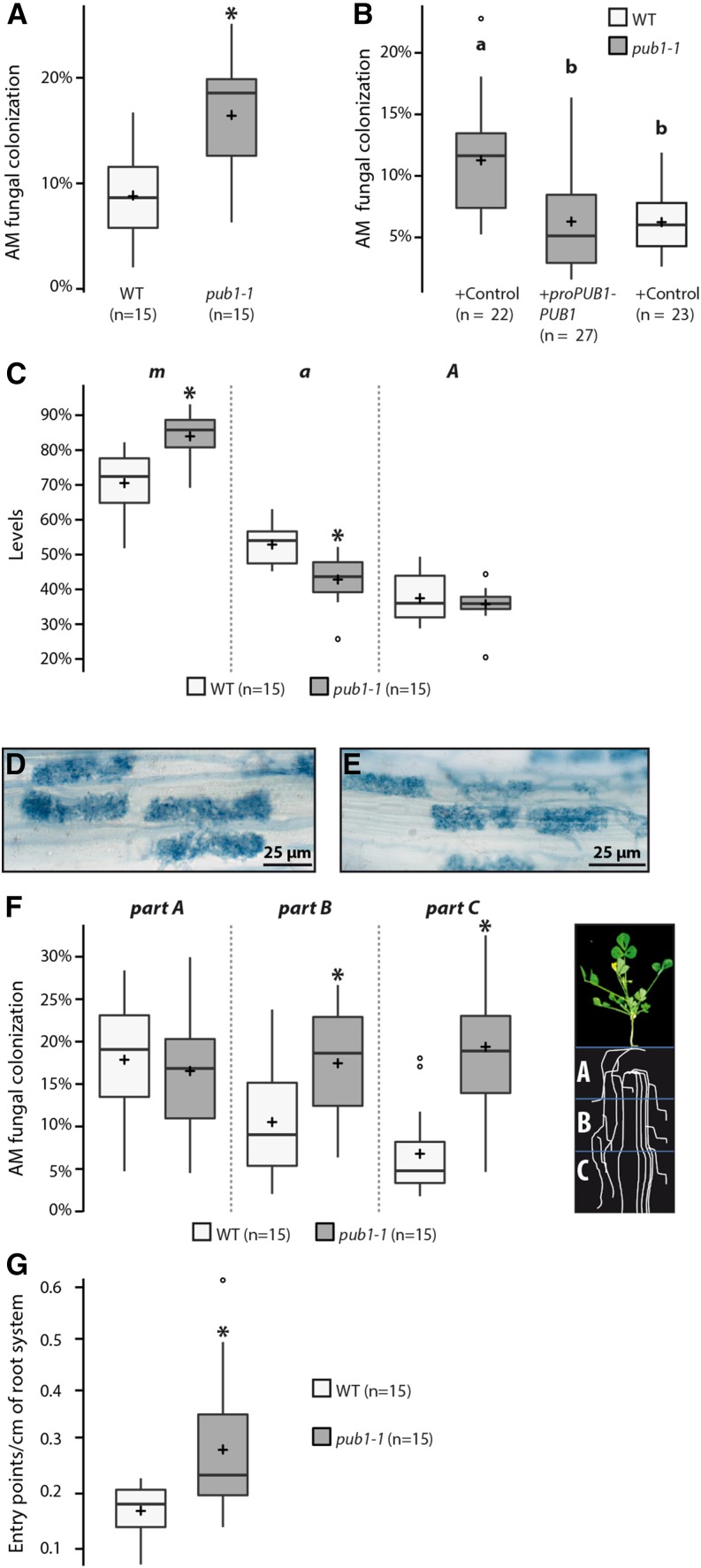Figure 4.
PUB1 negatively regulates root AM symbiosis via its ubiquitination activity. A, Box plots show level of colonization per plant 6 weeks post-inoculation (wpi) with R. irregularis (350 sp L−1) on wild-type and pub1-1 roots. B, PUB1 complements pub1-1 AM root symbiotic phenotype. Wild-type and pub1-1 M. truncatula roots were transformed with A. rhizogenes strains containing ProPUB1-3HA-PUB1 or an empty vector (control). Transformed roots were inoculated with R. irregularis (1000 sp L−1) and scored at 25 dpi. Different letters indicate significant differences. C, Quantification of AM fungal colonization in wild-type and pub1-1 measured according to Trouvelot method at 6 wpi (350 sp L−1). m, intensity of the mycorrhizal colonization in the colonized root fragments; a, arbuscule abundance in the colonized root fragments; A, arbuscule abundance in the root system. D and E, wild-type (D) and pub1-1 (E) roots colonized by R. irregularis. No apparent difference in arbuscule development was observed. F, Each root system was transversally divided in three equal parts: part A (oldest part), part B (middle part), and part C (youngest part), as described on the cartoon. Levels of AM fungal colonization in wild-type and pub1-1 at 6 wpi with R. irregularis (350 sp L−1) are shown for each root part (A–C). G, Fungal entry points in wild type and pub1-1 at 2 wpi with R. irregularis (4000 sp L−1; normalized by the total root length). Significant differences (* P ≤ 0.05) were detected by two-sample t tests (C, G) and Wilcoxon rank sum tests (A, B, and F). For details, see box-plot descriptions on Figure 3. WT, wild type.

